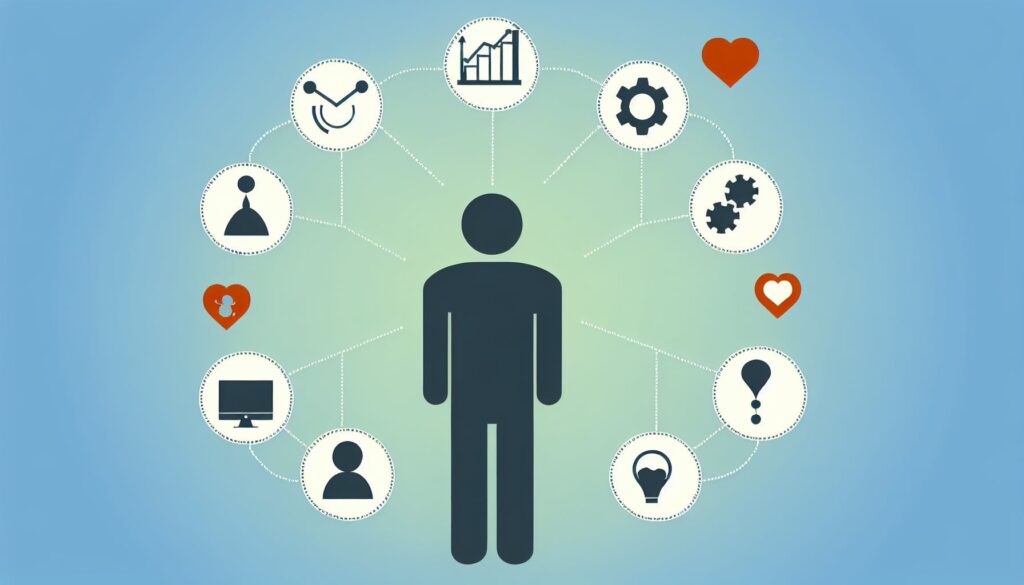Introduction
Data analysis has become a crucial function across virtually every industry. With the exponential growth in data, organizations rely on skilled data analysts to extract meaningful insights that drive strategic decisions. However, many aspiring analysts face confusion on where to start and struggle to master the breadth of technical skills required. This roadmap aims to provide clarity on the core competencies needed to excel as a data analyst.
We’ll explore the responsibilities of a data analyst, top technical proficiencies like SQL and Python, must-have toolkits for data tasks, structured methodologies to guide analysis, and leveraging AI for enhanced productivity. Follow this guide to gain expertise in these essential areas. With the right roadmap, you can successfully navigate the path to becoming a professional data analyst.
What Does a Data Analyst Do?
Data analysts are responsible for collecting, cleaning, and organizing data, then conducting analysis to uncover actionable insights, trends, and opportunities.
Typical data analyst responsibilities include:
-
Identifying data sources and designing systems to extract and collect relevant data from sources like web APIs, databases, CRM systems, social media platforms, etc.
-
Processing and cleansing raw data to handle missing values, duplicates, formatting issues and prepare it for analysis. Tasks involve data imputation, normalization, standardization etc.
-
Performing exploratory analysis using statistical techniques like regression, clustering, decision trees and visualization tools to spot patterns, trends, and relationships in data.
-
Developing predictive models and machine learning algorithms like random forests, neural networks, Naive Bayes classifier etc. to forecast future outcomes from data.
-
Interpreting analysis results and communicating insights through reports, dashboards, data visualizations, and presentations to stakeholders.
-
Monitoring data quality and implementing improvements to data collection procedures, storage architectures and cleansing processes.
Data analysts work across all industries, from finance and healthcare to marketing and government. Positions include business analysts, marketing analysts, financial analysts, operations analysts, and more. The field offers competitive salaries, with the average data analyst earning $72,000 annually in the US. With demand growing rapidly for data skills, it’s an exciting time to pursue this career path.
The Urgent Need for Data Analysts
We’re generating more data every day than ever before. Analysts estimate the world’s data doubles every two years, as everything from online transactions to social media generates digital information. Business leaders are recognizing data as a strategic asset to improve operations, marketing, financial performance and more.
But data holds little value on its own. Making sense of massive datasets requires analytical talent – people who can contextualize data and uncover the meaningful trends and insights hidden within it. It’s estimated that the US alone will face a shortage of 250,000 data professionals by 2024. This surge in data has created a huge shortage of qualified analysts. Top firms like Google, Apple, Meta and Amazon urgently seek data professionals who can meet the growing analytical needs of organizations.
Becoming a data analyst promises strong job prospects, competitive salaries, and opportunities to provide real value to companies across industries. For individuals with an analytical mindset and interest in deriving insights from complex data, it is an ideal and fulfilling career path worth pursuing.
Critical Technical Skills
Mastering a range of technical capabilities is essential for succeeding as a data analyst. While some skills come easier than others, developing proficiency in these key areas is crucial.
SQL
SQL is a must-have for accessing and manipulating data stored in databases. This standard query language allows analysts to selectively extract and analyze large datasets. With many organizations using relational databases like MySQL, Oracle, and SQL Server, learning SQL is a top priority.
SQL enables data analysts to perform tasks like:
-
Querying database tables to retrieve specific data points or entire datasets based on conditions
-
Joining multiple tables to combine data sources
-
Aggregating data using functions like SUM(), MAX(), COUNT() etc.
-
Filtering and sorting data rows based on criteria
My Data Road’s SQL guides and cheat sheets are a valuable reference. Make sure to practice writing queries using sample datasets. Gaining fluency in SQL will boost productivity on data tasks.
Python
Python has become the most popular programming language for data analysis thanks to its powerful libraries like Pandas, NumPy, and SciPy. Analysts leverage Python for data collection, preprocessing, visualization, and predictive modeling.
Key capabilities of Python for data analysts:
- Automates repetitive data tasks through scripts and code
- Performs data munging and cleansing efficiently
- Statistical analysis and machine learning modeling
- Flexible data visualizations for exploratory analysis
- Web scraping capabilities to extract online data
Check out My Data Road’s Python tutorials and Jupyter notebooks to learn data analysis techniques. Start by grasping Python basics before diving into advanced functionality.
R Programming
While Python leads for general-purpose data tasks, R remains the preferred language for statistical analysis and modeling. Data analysts rely on R for its advanced analytical capabilities and extensive ecosystem of packages.
R enables in-depth statistical capabilities like:
- Statistical tests – T-tests, ANOVA, Chi-Square etc.
- Predictive modeling functions – linear regression, randomForest, Naive Bayes etc.
- Customizable data visualizations through ggplot2 and other graphing packages
Build R skills through interactive courses and practice challenges. Become familiar with its array of packages like dplyr, ggplot2, and caret. Leverage RStudio tutorials and documentation to master this powerful analytical programming language.
Excel
Excel remains an indispensable tool for analysts thanks to its flexibility in data organization, calculation, charting, and basic analysis. Skills like spreadsheet formatting, formulas, and PivotTables are still widely used.
Excel helps analysts:
- Organize and format raw datasets
- Perform calculations on data
- Create basic charts and graphs for visualization
- Conduct simple statistical analysis
Check My Data Road’s Excel tips to work faster and maximize functionality. Learn shortcuts and best practices to enhance productivity. Excel mastery will boost your analytical toolkit and workplace effectiveness.
Must-Have Data Analysis Toolkits
Beyond core programming languages, analysts rely on specialized toolkits designed specifically for key aspects of the data analysis process. Here are some of the most essential solutions.
Python Libraries
- Pandas: Performs advanced data manipulation, preprocessing, and analysis. Enables joining, aggregating, cleansing datasets.
- NumPy: Provides efficient arrays and matrices for numerical data. Speeds up mathematical operations.
- Scikit-Learn: Leading Python machine learning library with algorithms like random forests, SVMs etc.
- Matplotlib: Flexible Python data visualization. Creates custom plots, graphs and charts.
- NLTK: Natural language processing toolkit. Analyzes text data through tokenization, classification etc.
Check My Data Road’s Python library tutorials to leverage these powerful packages.
R Packages
- dplyr: Transforms and prepares data for analysis. Enables data manipulation in R.
- ggplot2: Creates custom data visualizations. Flexible R graphing capabilities.
- caret: Streamlines machine learning model training and evaluation. Simplifies ML workflows.
- tidyr: Designed for tidying messy datasets. Handles missing data, parsing issues etc.
- stringr: Text manipulation and analysis. Performs regex and string operations.
Master these and more with R documentation and question boards.
Tableau
Tableau leads as the analytics and visualization solution for dashboards. Useful capabilities:
- Drag-and-drop interface to build interactive visualizations.
- Dashboard development for data storytelling.
- Tableau Prep for data transformation. Handles joins, unions etc.
- Seamless statistical analysis integration like forecasting, clustering etc.
Practice is key – use Tableau Public to hone skills. Produce dashboards for your portfolio.
Big Data Tools
Processing huge datasets requires Big Data architectures. Common solutions:
- Hadoop: Distributed data storage and processing framework. Manages large datasets across clusters.
- Spark: Lightning-fast cluster computing engine for large-scale data processing.
- Hive: Data warehouse system for querying and managing data in Hadoop. Provides SQL interface.
- AWS, Azure: Cloud infrastructure and services like S3, Redshift, Databricks etc.
Learn Big Data pipelines to prepare for larger-scale analytics.
Structured Methodologies
Established frameworks guide analysts through the data science process systematically. Two widely-used approaches are CRISP-DM and OSEMN.
The CRISP-DM Model
The CRISP-DM methodology provides a structured life cycle designed for data mining projects. Key phases include:
1. Business Understanding: Analyze project objectives, requirements and desired outcomes. Identify key variables.
2. Data Understanding: Collect, describe and explore datasets. Spot issues with data quality, completeness etc.
3. Data Preparation: Clean and preprocess data. Handle missing values, parse data types, filter outliers etc.
4. Modeling: Develop, train and optimize analytical models like neural networks, decision trees etc. based on goals.
5. Evaluation: Assess model performance against evaluation metrics. Check for overfitting, underfitting etc.
6. Deployment: Implement models into production through APIs, dashboards etc. Track performance on live data.
CRISP-DM’s iterative approach helps beginners navigate analytical projects. Learn more to leverage its effective process.
The OSEMN Framework
OSEMN outlines a workflow for advanced analytics and machine learning:
1. Obtain: Import and collect relevant datasets from sources like databases, CSVs, web APIs etc.
2. Scrub: Clean, transform, and prepare data for analysis. Address data quality issues.
3. Explore: Analyze datasets through visualization using tools like Tableau and statistical analysis in R.
4. Model: Develop predictive models and machine learning algorithms based on the goal. Tools like Python (Scikit-Learn, Keras) and R Caret package can be leveraged.
5. iNterpret: Interpret the model outputs and document the process and results through reports and presentations.
OSEMN provides helpful guidance for modeling-focused data science initiatives.
Leveraging AI for Enhanced Analysis
AI is transforming data analysis through automation and augmentation. Natural language and computer vision tools extract insights from unstructured text, image and video data. Machine learning algorithms uncover complex patterns and make predictions from messy datasets.
My Data Road provides accessible interfaces to integrate AI into data workflows. Our NLP analysis tools like text summarization, sentiment analysis and topic modeling extract key information from documents and text. The computer vision capabilities analyze images and videos to count objects, detect types, and more. Users of all skill levels can leverage AI to enhance analytics and productivity.
AI also helps automate repetitive data tasks. NLP tools can generate summaries and reports from data. Vision capabilities help label and organize datasets. My Data Road offers assisted data annotation through our AutoTag tool to simplify this process. AI augmentation enables analysts to work smarter – focusing on high-value, strategic responsibilities while AI handles routine activities.
Developing Critical Analytical Skills
Beyond technical proficiencies, excelling as a data analyst requires developing core analytical skills. Critical thinking, attention to detail, statistical fluency and communication abilities set great analysts apart.
Analytic skills allow analysts to:
-
Think critically to ask the right questions and draw meaningful conclusions from data patterns
-
Pay rigorous attention to detail when gathering, cleaning and processing data to ensure quality
-
Develop statistical thinking to properly apply techniques and interpret analysis results
-
Communicate data insights clearly to stakeholders through visualizations, presentations and storytelling
Data analysis is fundamentally about human analysis and interpretation. Master technical capabilities, but also cultivate your high-level analytical abilities through practice and experience.
Continuing Your Data Analysis Journey
Becoming a skilled data analyst takes commitment, but pays dividends in career opportunities. While this roadmap outlines core capabilities, analysts should always seek to expand their skillsets.
Set learning goals, take on new challenges, and don’t be afraid to learn new programming languages, frameworks, or methodologies. Participate in data communities through platforms like Kaggle to exchange ideas and stay inspired. The field rewards those committed to continuous growth and improvement.
By following the steps outlined here and leveraging resources like My Data Road to guide your learning, you can develop the expertise to excel as a data analyst or data scientist. Remember that mastery takes time and dedication. But with focus, you can achieve data proficiency and build a rewarding career turning data into actionable insights.
Enroll in My Data Road’s hands-on training programs to keep progressing on your data analysis journey today. Our courses provide real-world projects and mentorship to take your skills to the next level.
Related posts
- Skills Needed as a Data Analyst: Integrating AI Tools
- Data Analyst Skills: From Basics to AI Integration
- Path to Become Data Analyst: Core Skills Uncovered
- Skills Required to Become a Data Analyst: Your Ultimate Guide

Tech Writer | Data Analyst | Digital Creator



